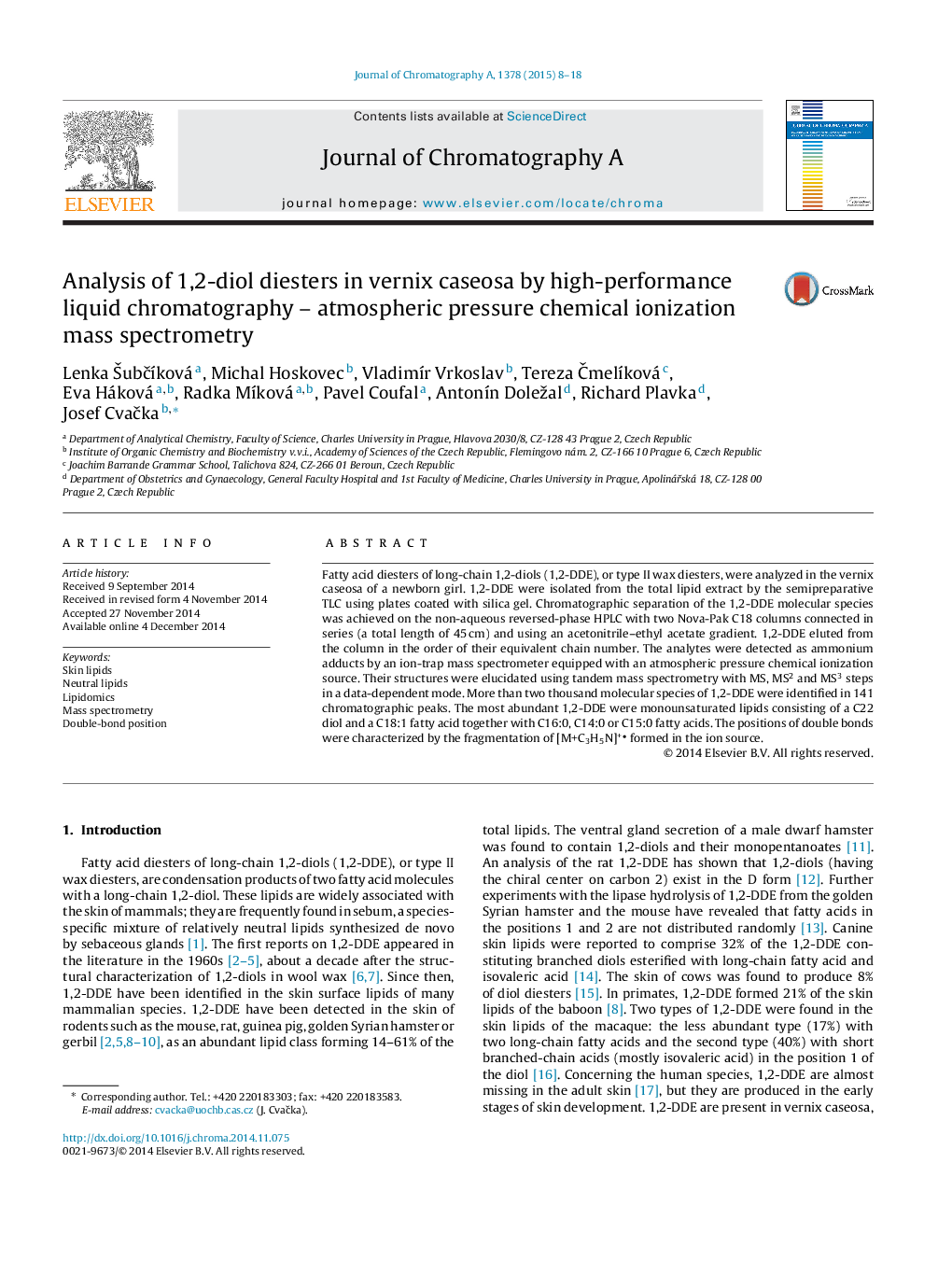| Article ID | Journal | Published Year | Pages | File Type |
|---|---|---|---|---|
| 1202345 | Journal of Chromatography A | 2015 | 11 Pages |
•Fatty acid diesters of long-chain 1,2-diols were isolated from vernix caseosa.•Molecular species were separated in RP-HPLC with acetonitrile–ethyl acetate gradient.•Structures were elucidated using tandem mass spectrometry with MS, MS2 and MS3 steps.•More than 2000 molecular species identified in 141 chromatographic peaks.
Fatty acid diesters of long-chain 1,2-diols (1,2-DDE), or type II wax diesters, were analyzed in the vernix caseosa of a newborn girl. 1,2-DDE were isolated from the total lipid extract by the semipreparative TLC using plates coated with silica gel. Chromatographic separation of the 1,2-DDE molecular species was achieved on the non-aqueous reversed-phase HPLC with two Nova-Pak C18 columns connected in series (a total length of 45 cm) and using an acetonitrile–ethyl acetate gradient. 1,2-DDE eluted from the column in the order of their equivalent chain number. The analytes were detected as ammonium adducts by an ion-trap mass spectrometer equipped with an atmospheric pressure chemical ionization source. Their structures were elucidated using tandem mass spectrometry with MS, MS2 and MS3 steps in a data-dependent mode. More than two thousand molecular species of 1,2-DDE were identified in 141 chromatographic peaks. The most abundant 1,2-DDE were monounsaturated lipids consisting of a C22 diol and a C18:1 fatty acid together with C16:0, C14:0 or C15:0 fatty acids. The positions of double bonds were characterized by the fragmentation of [M+C3H5N]+ formed in the ion source.
